Stop Agonizing Over Paint Chips: Here’s How to Choose a Living Room Color You’ll Actually Love
I’ve been swinging a paintbrush for a living for a long, long time. And in all those years, I’ve seen some wild color trends come and go. Remember when every other living room had to have a deep red accent wall? A few years later, it was all about chocolate brown. While some of those looked sharp for a minute, a lot of folks grew tired of them fast. Why? Because they were chasing a trend, not choosing a color that really fit their home and their life.
In this article
Let’s be honest, picking a living room color feels like a huge decision. It is! This is the space where you unwind, host friends, and make memories with your family. The color on those walls sets the mood for everything. My goal here isn’t to tell you what’s popular right now. It’s to walk you through the process the pros use to pick a color you’ll be happy with for years to come.
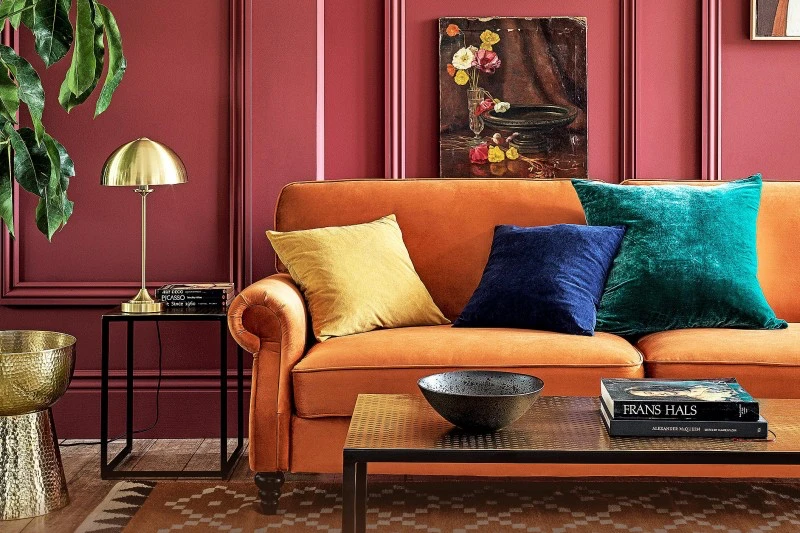
A great paint job is about 80% prep and 20% actually painting. And guess what? The same goes for choosing the color.
First Things First: Understanding Paint and Light
Before you even glance at a color chip, we need to talk about the technical stuff. This is the background knowledge that separates a beautiful, lasting paint job from one you’ll regret in six months. Ignoring these details is probably the single biggest mistake I see people make.
Light Reflectance Value (LRV) is Your Secret Weapon
Every single paint color has a Light Reflectance Value, or LRV. It’s a simple scale from 0 to 100 that tells you how much light a color reflects. Think of it this way: pure black is close to 0 (it eats all the light), and pure white is near 100 (it bounces all the light back). You can usually find the LRV on the back of the paint chip or by looking it up online on the manufacturer’s website.
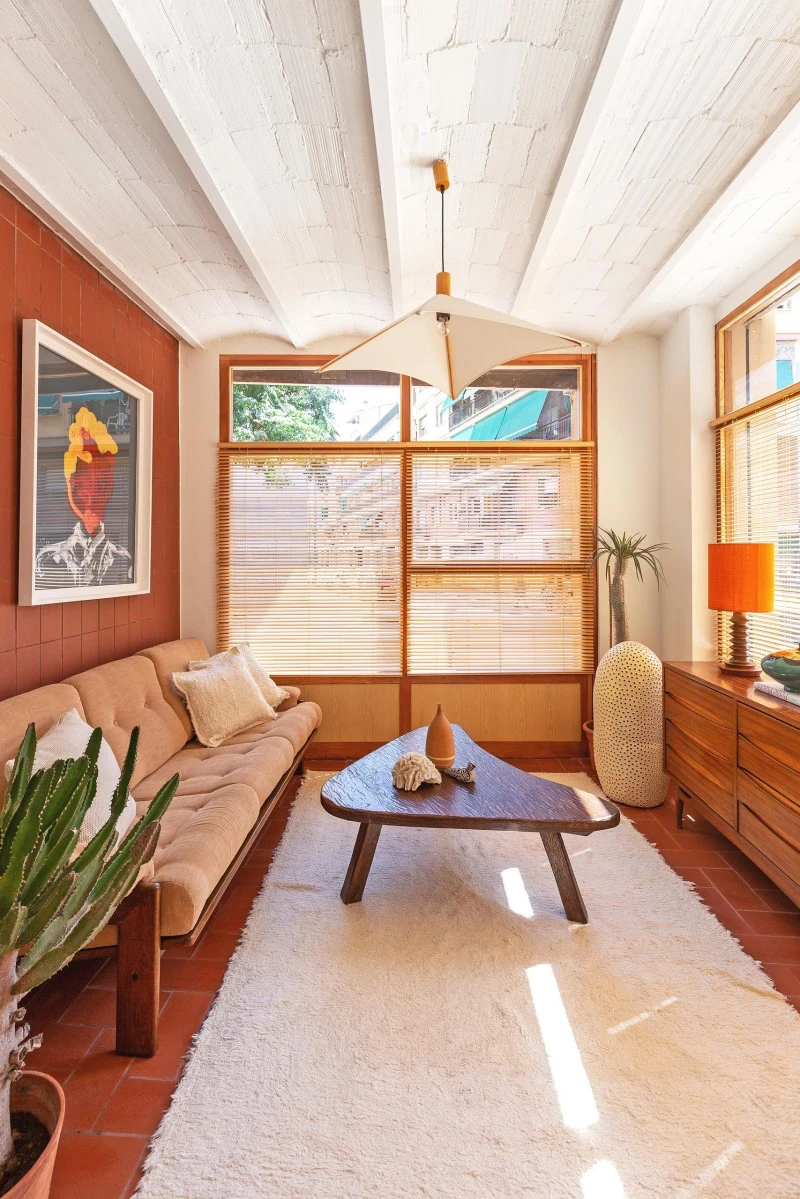
So why should you care? Because LRV is the key to controlling how a room feels. If you have a small living room with a tiny window, a color with a high LRV (let’s say 60 or more) will work wonders to make the space feel bigger and brighter. On the flip side, if you have a massive, sun-blasted room you want to feel cozier, a color with a low LRV (under 30) will absorb some of that light and create a more intimate, moody atmosphere. It’s a simple number that takes a lot of the guesswork out of the equation.
How Light Changes Everything
The same can of paint will look completely different depending on the light hitting it. This is what trips everyone up. You have to think about your windows.
- North-facing rooms get cool, indirect light all day. This light tends to pull out blue or green undertones in paint. That perfect neutral gray can suddenly look chilly and almost purple. To counteract this, I often suggest leaning into colors with warmer undertones, like a creamy off-white or a good ‘greige’ (that’s a mix of gray and beige).
- South-facing rooms are a painter’s dream, with bright, warm light for most of the day. Most colors look great here, but be careful—the intense light can wash out very pale colors and make any warm undertones (like reds or yellows) feel even stronger.
- East-facing rooms get that bright, warm light in the morning and then cool down in the afternoon. You need a color that can play both roles, so testing is critical.
- West-facing rooms are the opposite, with softer light in the morning and a fiery, warm glow in the afternoon and evening. That cozy tan can look surprisingly orange as the sun sets.
And don’t forget your light bulbs! I once had a client who fell in love with a soft sage green sample during the day. That night, she called me in a panic. Her new, very cool-toned LED bulbs made the beautiful green look sickly and almost minty. We fixed it by swapping her bulbs for ones with a warmer temperature—around 2700K on the Kelvin scale is a good target for a cozy feel. Always, always check your samples at night with the lights on.
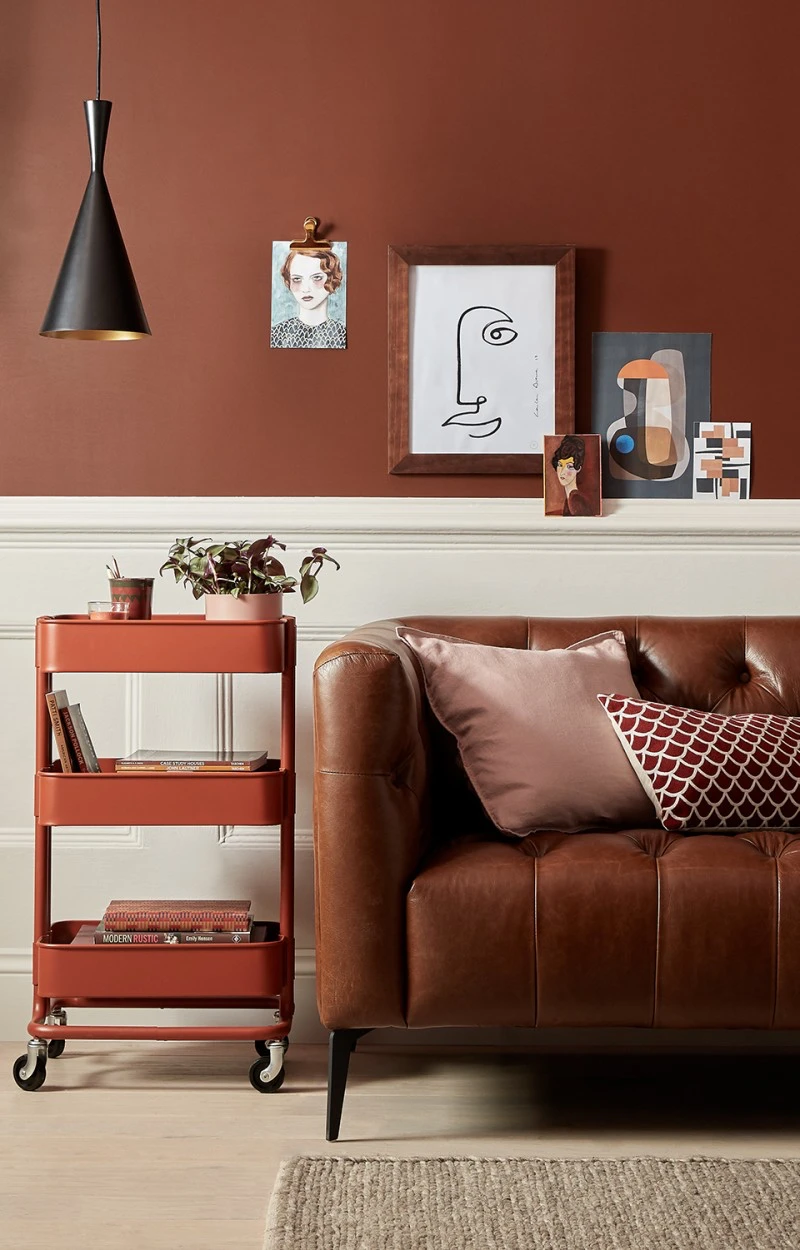
The Big Deal About Sheen (Or Finish)
The sheen of your paint affects how it looks and how well it holds up. For living rooms, you’re generally choosing between matte, eggshell, and satin. Instead of a confusing chart, let’s just break it down.
Matte (or Flat) has zero shine. Its biggest pro is that it’s fantastic at hiding imperfections on the wall, like old patches or bumps. But—and this is a big but—it’s the least durable. It scuffs if you look at it wrong and is a real pain to clean. For that reason, I only recommend matte for ceilings or adult-only, super low-traffic living rooms.
Eggshell is my go-to for about 90% of living room projects. It has a very slight, soft glow (like an egg’s shell, go figure). It’s the perfect middle ground. It hides flaws pretty well while being much easier to wipe down than matte. Honestly, this is your safest and best bet for most situations.
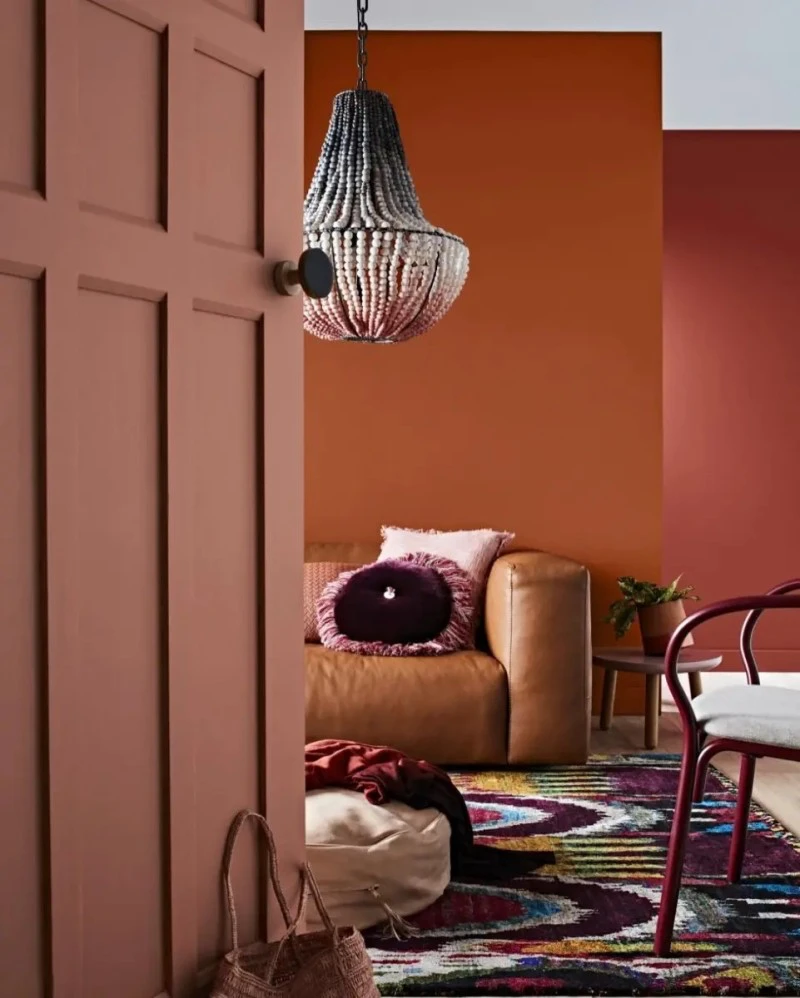
Satin has a noticeable, silky sheen. It’s very easy to clean, which makes it a great choice if you have kids or pets. The downside? That shine highlights every single flaw on your wall. If your drywall isn’t perfectly smooth, satin will show every nail pop and bumpy patch. Heads up!
By the way, if you’re going for a really dark, dramatic color like a deep navy or charcoal, a matte finish can look absolutely stunning, almost like velvet. But your wall prep has to be FLAWLESS.
How to Test Paint Colors Like a Pro
Please, I’m begging you, do not paint a small test swatch directly on your wall. Your current wall color will mess with how you perceive the new one, and you’ll end up with a color you hate. There’s a much better way.
- Buy Sample Pots, Not Just Chips. Once you have 2-3 top contenders, go buy the small sample pots. They’re about $5-$10 each and are the best money you’ll spend. Paint chips are just ink on paper and never a perfect match.
- Make Giant Sample Boards. Grab a couple of large, white foam core boards from any craft store for each color. Paint two full coats on each board, letting them dry completely. This shows you the true, undiluted color.
- Move Them Around. Tape your sample boards up on different walls in the room. Put one next to your window trim, one behind the sofa, one near the fireplace. A color can look amazing on one wall and totally wrong on another because of the light.
- Live With It for 48 Hours. This is the most important step. Watch how the colors change from morning to noon to night. See how they look with your lamps on. This little bit of patience is what saves you from the massive headache and cost of repainting an entire room.
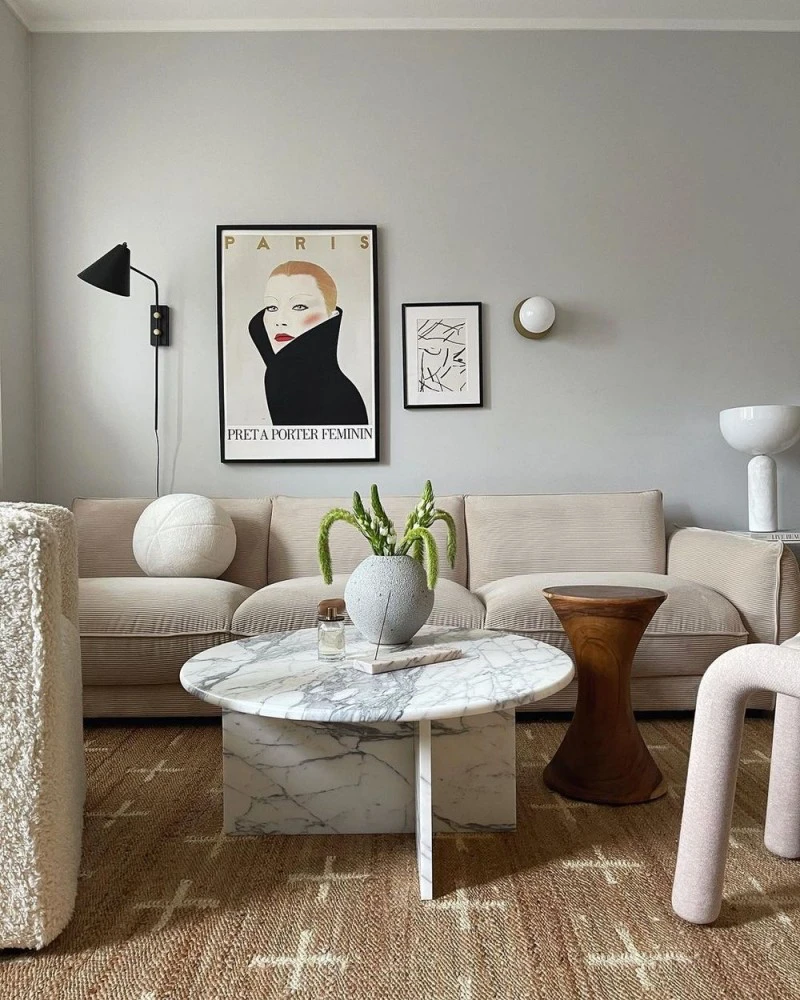
Let’s Talk About Timeless Color Families
Instead of chasing what’s hot this second, think about the feeling you want. Here are a few reliable color families and what to watch out for.
Warm Neutrals: The Cozy Foundation
We’re talking beige, taupe, cream, and even soft, earthy terracottas. These colors make a space feel welcoming and stable. The big challenge? Undertones. A beige that looks perfect on the chip might suddenly show a weird pink or sickly yellow undertone on your wall. Testing it on a pure white board really helps you spot these hidden tones before it’s too late. From my experience, a complex taupe with a hint of a green undertone can be magical; it shifts with the light and complements wood tones beautifully without screaming for attention.
Cool Neutrals: Clean and Sophisticated
This is the world of grays, from pale silver to deep charcoal. Grays are popular because they create a clean backdrop for furniture and art. But just like beiges, they are loaded with sneaky undertones (blue, green, even purple). A cool, blue-toned gray in a north-facing room can make the space feel like a cold office. For a safer bet, look for a versatile “greige.” Some of the most popular designer shades are in this family because they work in almost any light without turning cold.
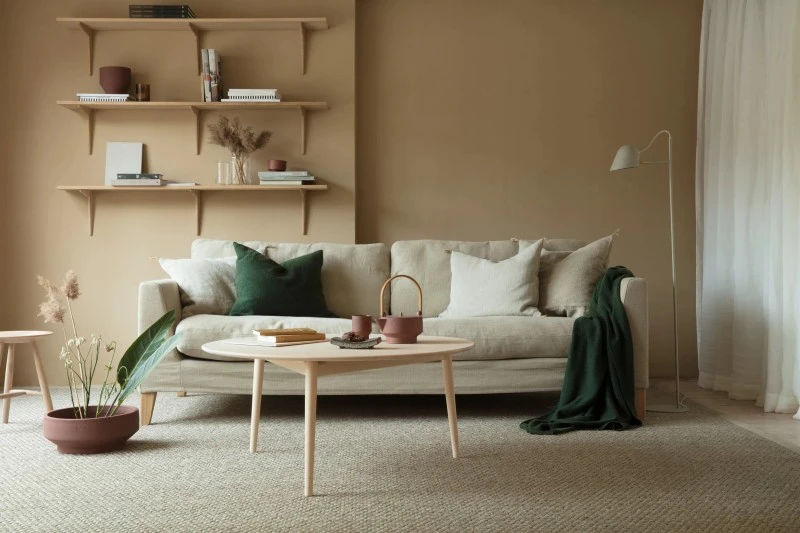
The Blues: From Airy to Moody
Blue is a classic for a reason—it’s calming. A light, airy blue can open up a space, but you’ll need to balance it with warm wood furniture or textiles to keep it from feeling chilly. On the other hand, a deep, dramatic navy can be incredibly chic. It’s a myth that dark colors always make a room feel small. A dark wall can actually recede, creating a sense of depth, and it’s perfect for a TV wall because the black screen just blends right in. Just be sure you have good lighting!
The Greens: Natural and Restful
Green connects us to nature and is great for creating a relaxing vibe. The key for a living room is to go for muted greens—think sage, olive, or mossy tones that have a bit of gray or brown mixed in. They are so much easier to live with than a bright lime or kelly green. Green is a natural partner for any wood finishes in your room, from floors to furniture.

The Prep Work That Guarantees a Great Finish
The most expensive, beautiful color in the world will look cheap if the prep work is sloppy. This is where you earn that professional-looking finish.
Your Shopping List (and What to Spend)
- Quality Paint: Don’t do it. Don’t buy the cheap stuff. A budget gallon might be $25, but a premium paint from a dedicated paint store, while costing more like $50-$80 a gallon, has better pigments and binders. It covers better (fewer coats!) and lasts longer. You save time and frustration in the long run.
- The Right Primer: If you’re making a big color change (like going from dark red to light beige), you need a high-hide primer.
- Good Tools: Spend $15-$25 on a good 2.5-inch angled brush for cutting in your edges. The $5 special will shed bristles into your paint, and you will be miserable. For smooth walls, a 3/8-inch nap roller is your standard.
- The Essentials: You’ll also need painter’s tape, drop cloths (canvas is better than plastic), spackle, a putty knife, and fine-grit sandpaper.
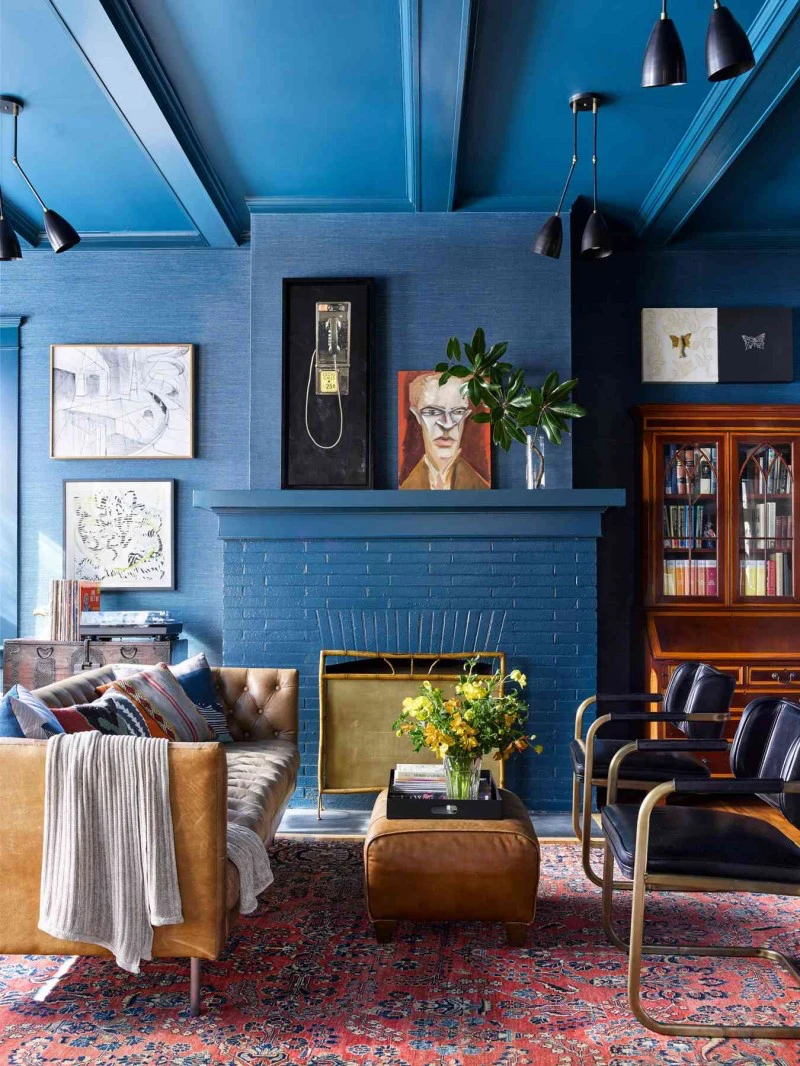
Quick Tip: How Much Paint Do I Need?
This is easy. Measure the length of all your walls and add them together. Then multiply that number by your ceiling height. This gives you your total square footage. A gallon of paint typically covers about 350-400 square feet with one coat. So, just divide your total square footage by 350, and that’s how many gallons you need for one coat. (Always plan on two coats!)
The Non-Negotiable Prep Steps
- Empty and Protect: Move furniture to the center of the room and cover it and the floors. Paint will find a way to get on everything you leave unprotected.
- Clean the Walls: Wash your walls with a mild detergent or a TSP substitute. Walls are grosser than you think. Paint won’t stick to dirt and grime.
- Patch and Sand: Fill every nail hole and crack with spackle. Sand it smooth. If you don’t, you will see every single patch through your new paint.
- Tape with Precision: Apply painter’s tape firmly along the trim. And here’s a lesser-known trick for razor-sharp lines: After taping, paint over the edge of the tape with your original wall color. This creates a seal. Any bleed-through will be in the old color. Let it dry, then paint with your new color. When you pull the tape off… perfect, crisp lines. You’re welcome!
To be frank, for a normal 15×15 ft. living room, this prep work is easily a 4-6 hour job if you do it right. The actual painting is the fast part!
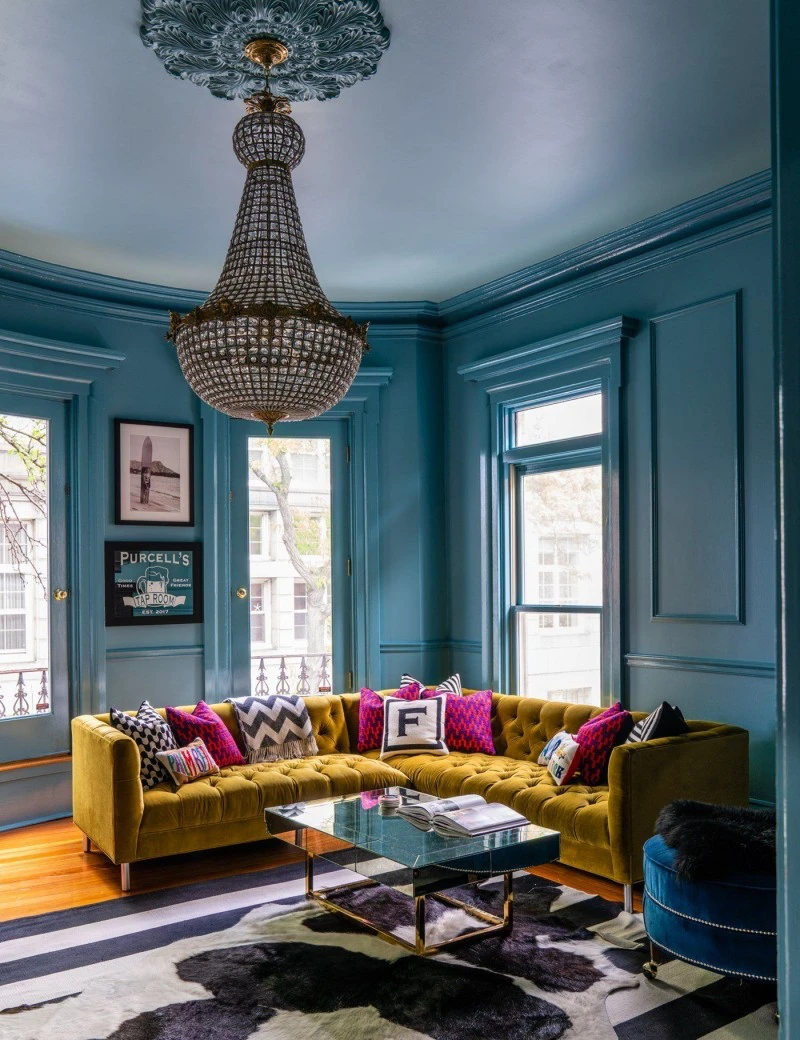
DIY vs. Calling for Backup
Painting seems simple, but there are a few final things to consider.
Health and Safety
Ventilation is key! Even low-VOC paints need fresh air to cure properly, so open those windows. And if your home was built before the late 1970s, you have to be cautious about lead paint. You can get a test kit at any hardware store. If it tests positive, do not sand or scrape it yourself. This is not a DIY job. The health risks are serious, and you need to call a certified lead-safe professional.
When to Hire a Pro
You can absolutely get a fantastic result on your own. But sometimes, hiring a pro is the smart move. If you have vaulted two-story ceilings, extensive wall damage, or just don’t have a full weekend to dedicate to the project, calling in a crew is worth it.
So what’s the cost difference? For an average living room, doing it yourself with high-quality materials will likely run you $200-$400. Hiring a professional painter for the same room could be anywhere from $700 to $2,000, depending on your location and the amount of prep needed. Yes, it’s more, but you’re paying for speed, safety, and a finish that’s close to perfect.
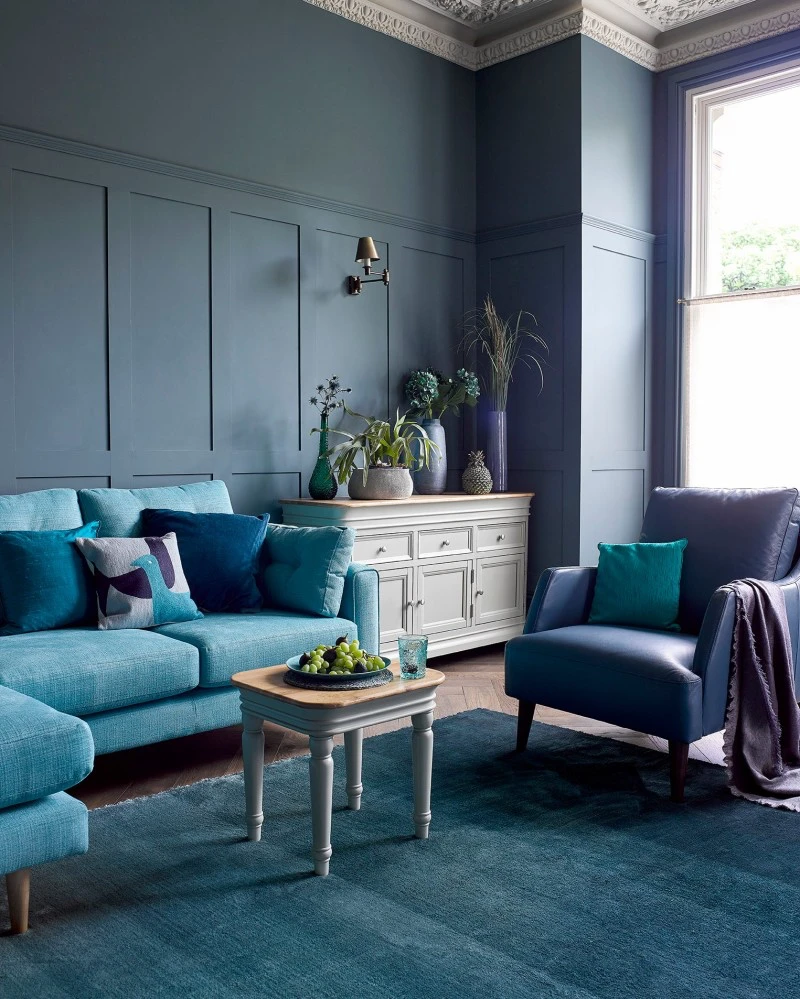
Ultimately, choosing a living room color is a personal journey. The right color isn’t in a magazine—it’s the one you find on your own walls after a little testing. It’s the one that feels just right with your morning coffee and just as good when you’re relaxing at night. Take your time, do the prep, and you’ll create a space you love for years to come.
Inspiration:
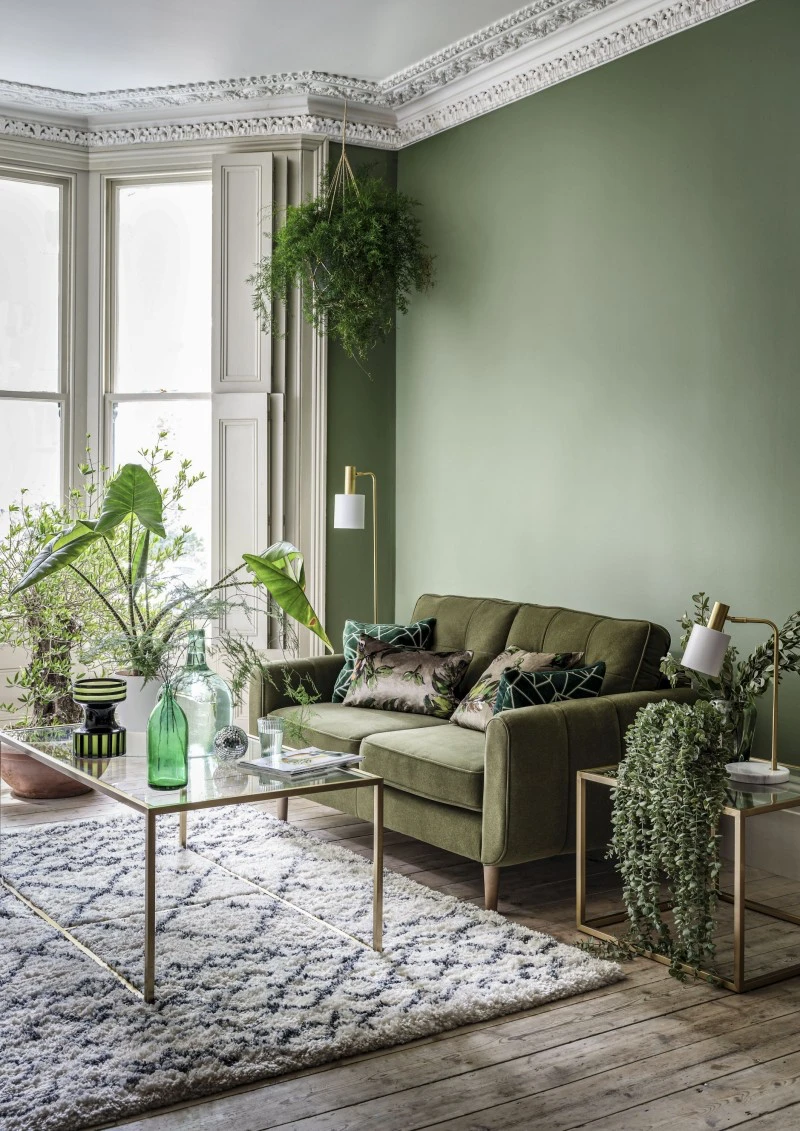
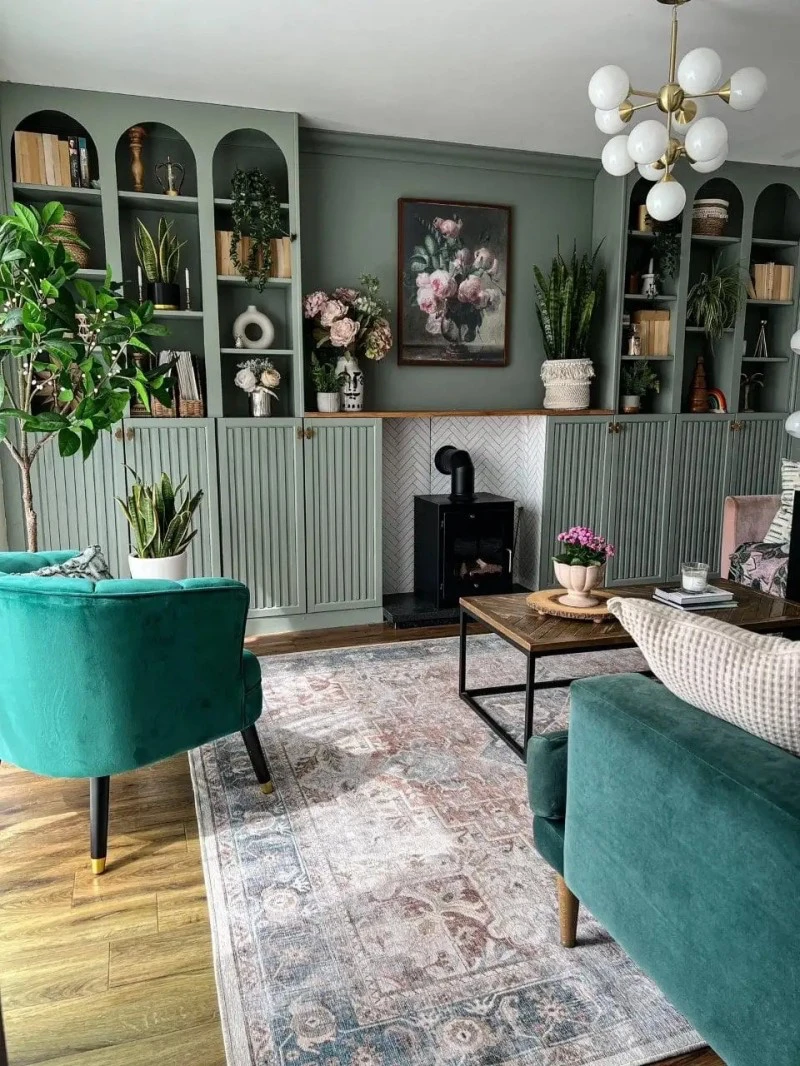
Afraid of choosing the wrong finish?
The sheen of your paint is just as important as the color. For a living room, an Eggshell finish is the professional’s choice. It has a very subtle luster that’s more durable and easier to wipe clean than a completely flat or matte finish, yet it still does an excellent job of hiding minor surface imperfections. A satin finish is a step up in durability, ideal if you have kids or pets, but it will reflect more light and highlight any dings in the drywall.
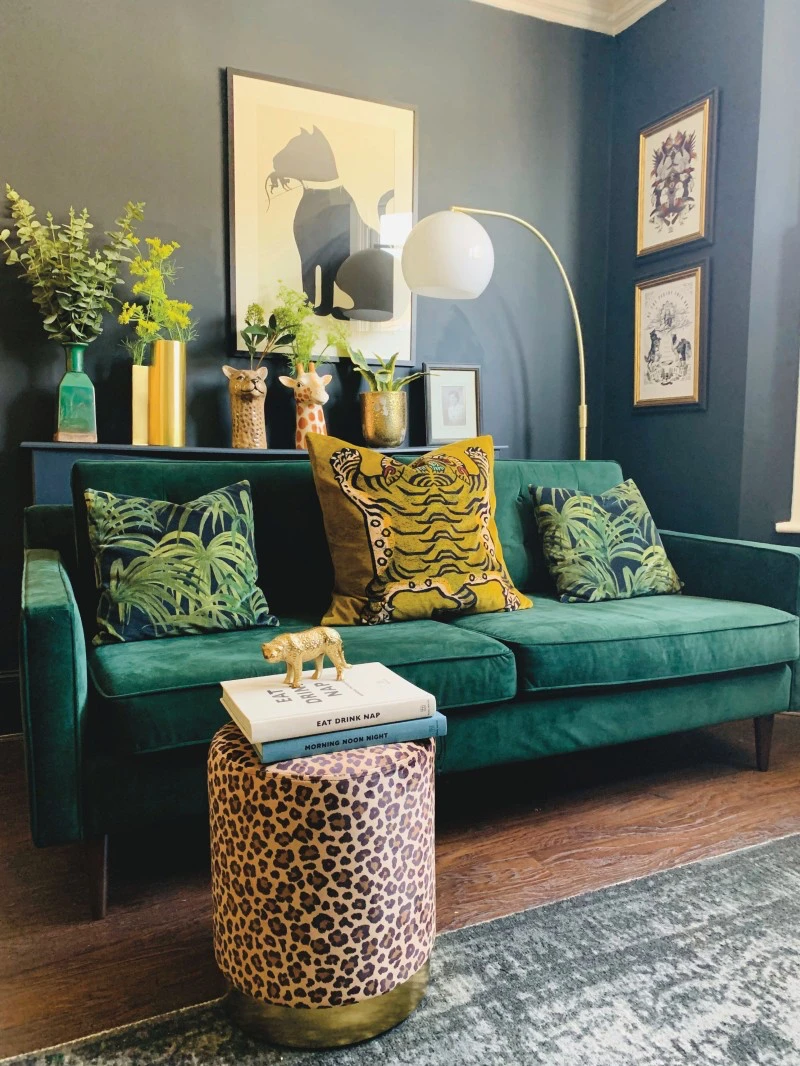
More than 60% of homeowners say choosing a paint color is the most stressful part of redecorating.
This feeling is completely normal! The key is to shift your mindset from finding the ‘perfect’ color to finding the ‘right’ color for your specific space. Remember, paint is one of the least expensive ways to transform a room, and it’s not permanent. Give yourself permission to experiment.
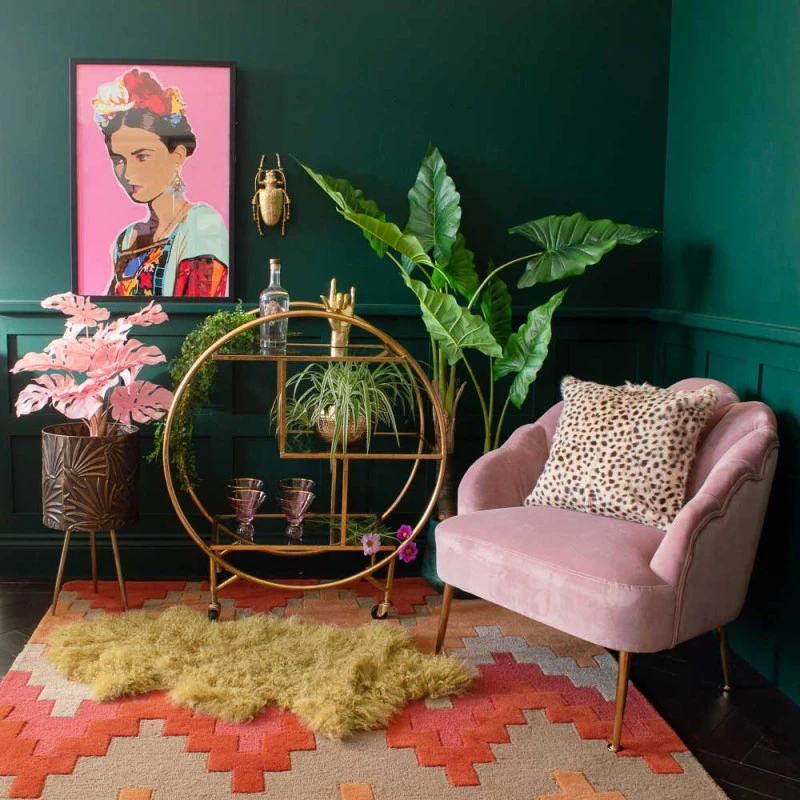
Don’t just paint a small square on the wall. To truly see how a color will behave, get a sample pot and paint a large piece of white foam board (at least 2×2 feet). This allows you to move the color around the room and observe it next to your sofa, against your trim, and in different lighting conditions throughout the day—from the cool morning light to the warm glow of your evening lamps.
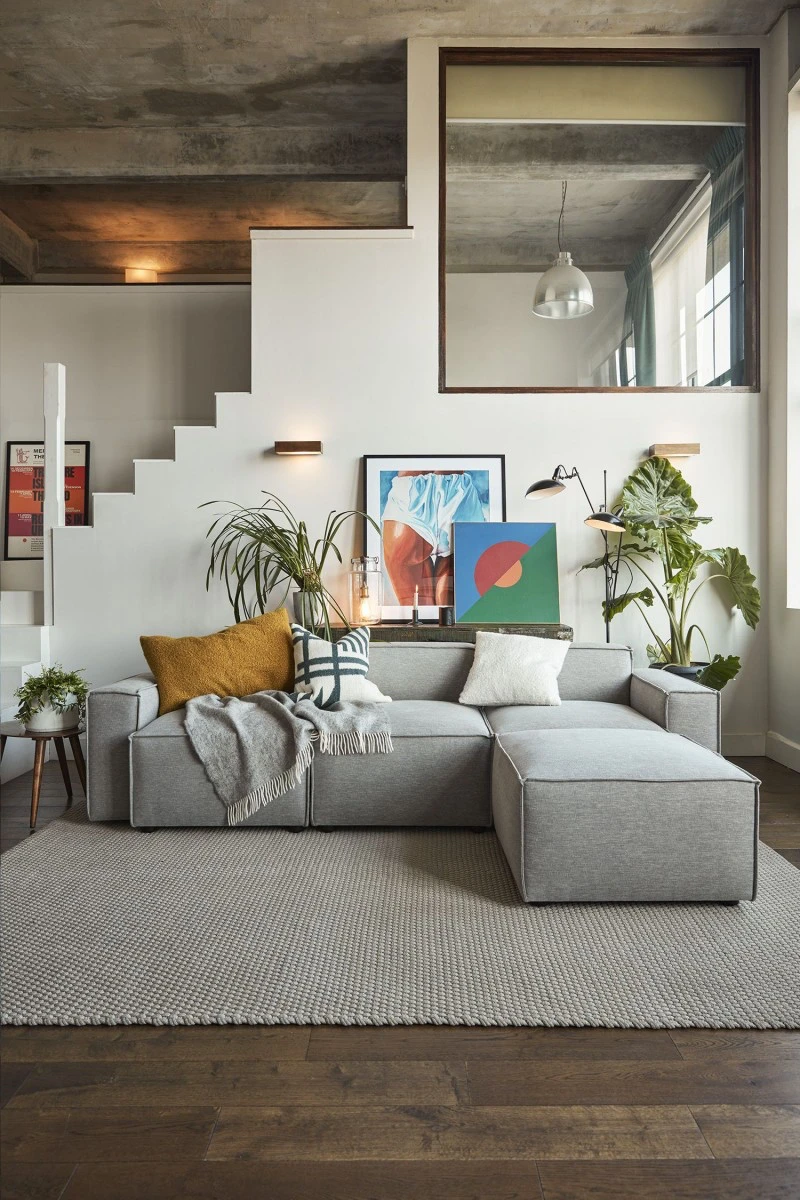
- Creates a rich, immersive atmosphere.
- Makes ceilings feel higher in a dark room.
- Gives a seamless, modern finish.
The secret? A technique called ‘color drenching’. This involves painting the walls, trim, doors, and sometimes even the ceiling in the same shade. It’s a bold designer move that works wonders with moody, complex colors like Sherwin-Williams’ Urbane Bronze or Farrow & Ball’s Hague Blue.
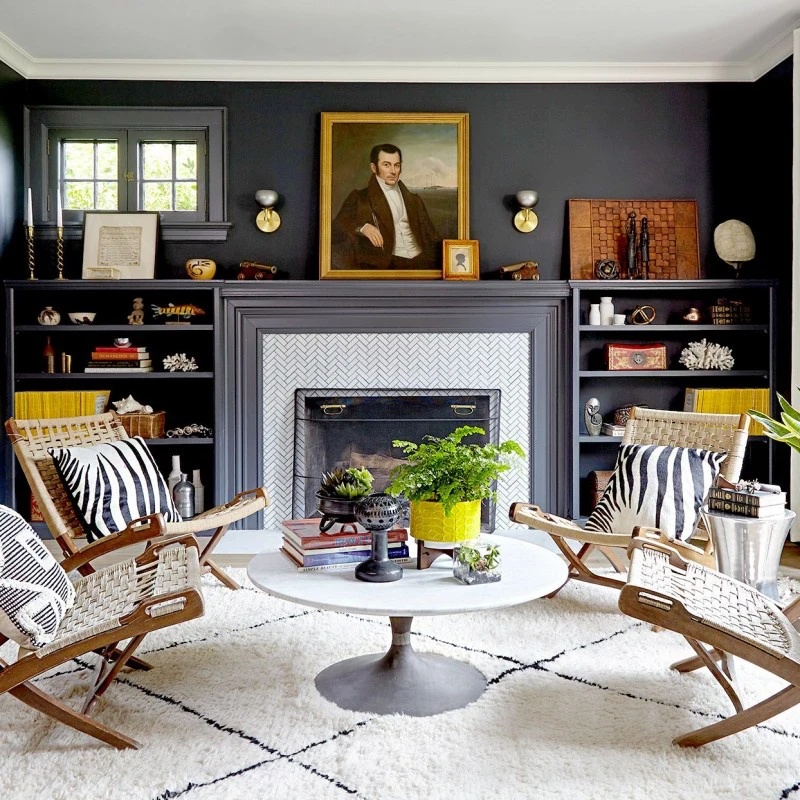
Before you even look at paint chips, look at the largest pattern in your room—it could be your area rug, a piece of art, or the fabric on your throw pillows. Pull the quietest, most subtle color from that pattern to use as your main wall color. This expert trick ensures a cohesive look because the color is already guaranteed to complement your existing decor.
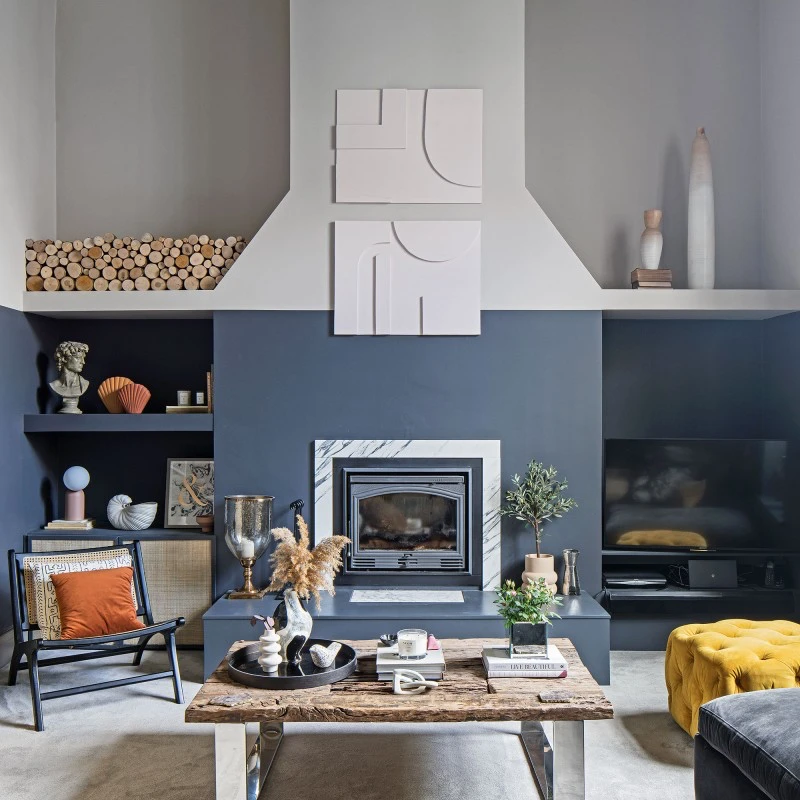
“Color is the soul of a room; it can tell a story, create a mood, and inspire a feeling.” – Kelly Wearstler, Interior Designer
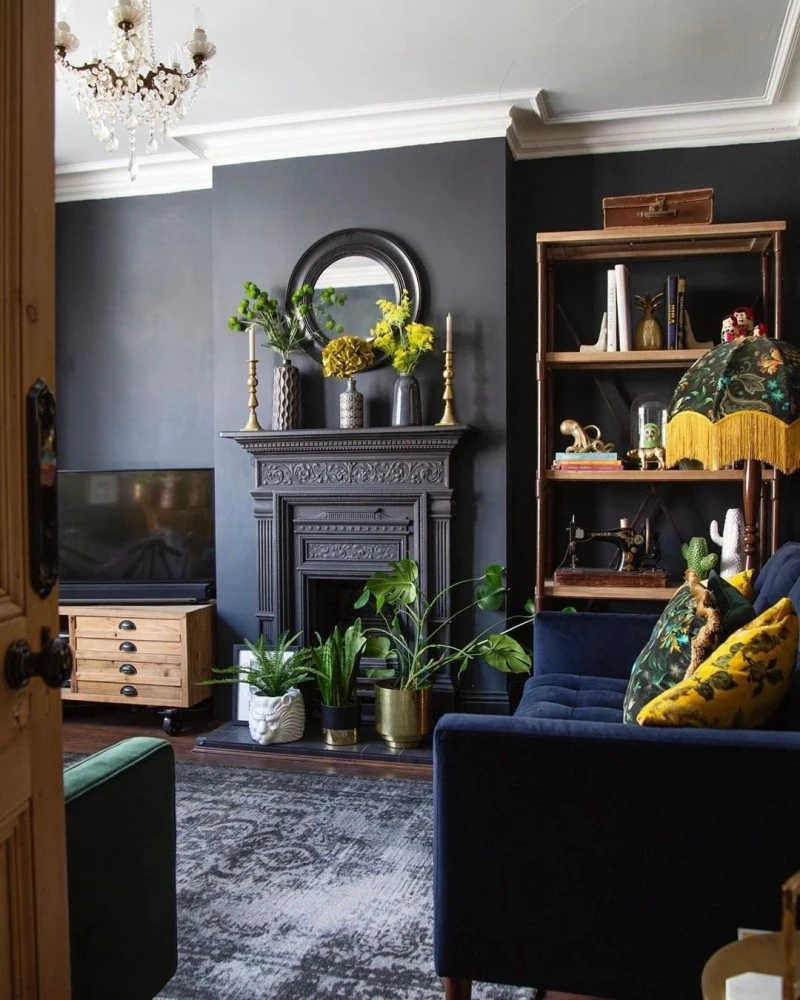
North-facing rooms: These rooms get cool, indirect light that can make colors appear bluer or grayer than they are. Avoid cool grays and choose colors with warm undertones (look for hints of yellow or red) to keep the space from feeling chilly. Benjamin Moore’s ‘Revere Pewter’ is a classic ‘greige’ that works beautifully in these conditions.
South-facing rooms: Flooded with warm light all day, these rooms can handle a wider range of colors, including cooler tones. A light blue or green can feel wonderfully fresh and balanced in a sun-drenched space.
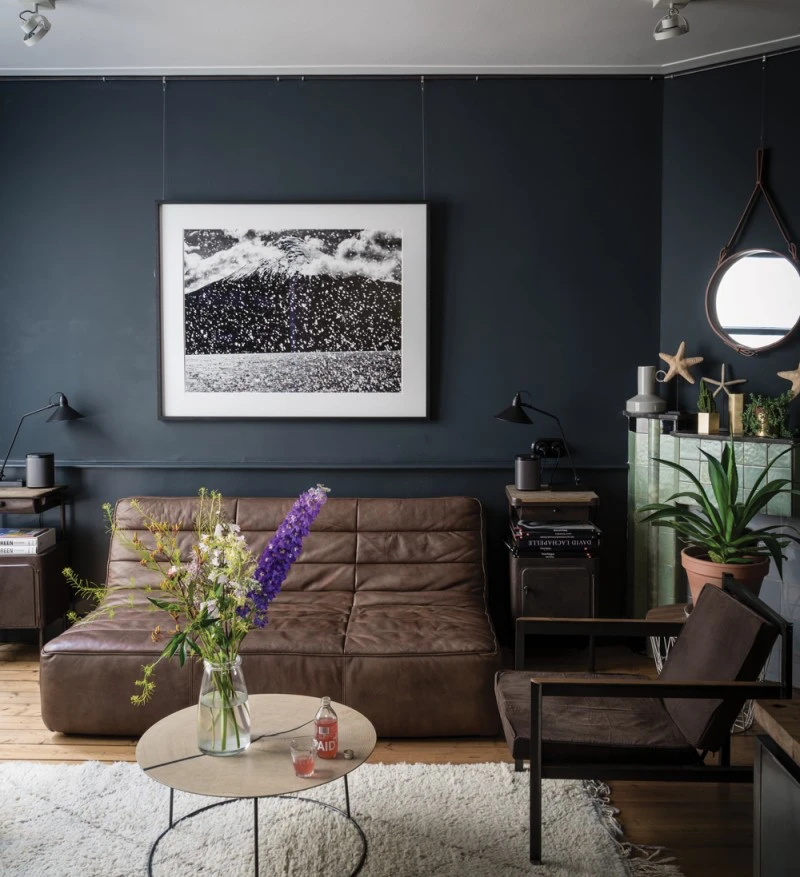
To achieve a harmonious color palette that feels professionally designed, try the classic 60-30-10 rule. It’s a simple way to balance colors in any space.
- 60% Main Color: Your walls. This is the dominant color that sets the overall tone.
- 30% Secondary Color: Your upholstery, curtains, or an accent wall. This color should support the main color.
- 10% Accent Color: Found in throw pillows, art, and accessories. This is where you can be bold and add a pop of personality.
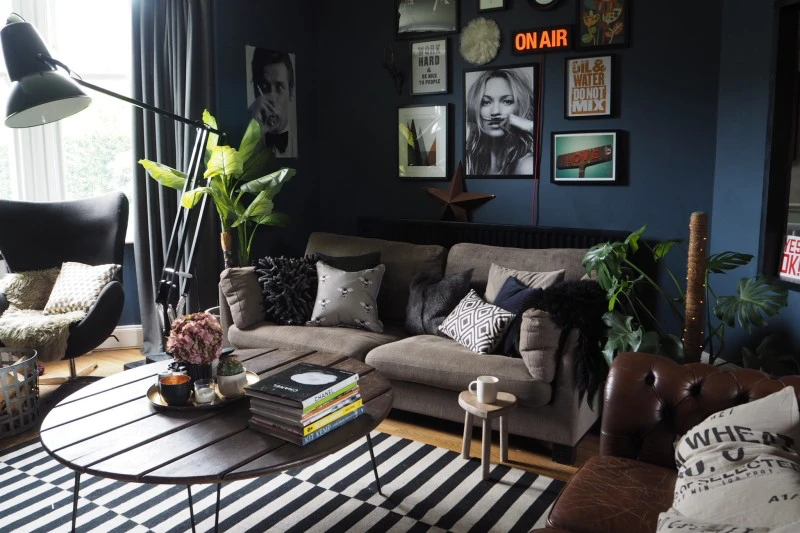
Thinking about a white living room? Be careful. Pure, stark white can feel clinical and cold, especially in a room with little natural light. For a more inviting feel, opt for an off-white with soft undertones. A color like Farrow & Ball’s ‘Wimborne White’ has a touch of yellow for a warm, aged look, while Benjamin Moore’s ‘White Dove’ has a hint of gray, making it a perfectly soft and versatile neutral.
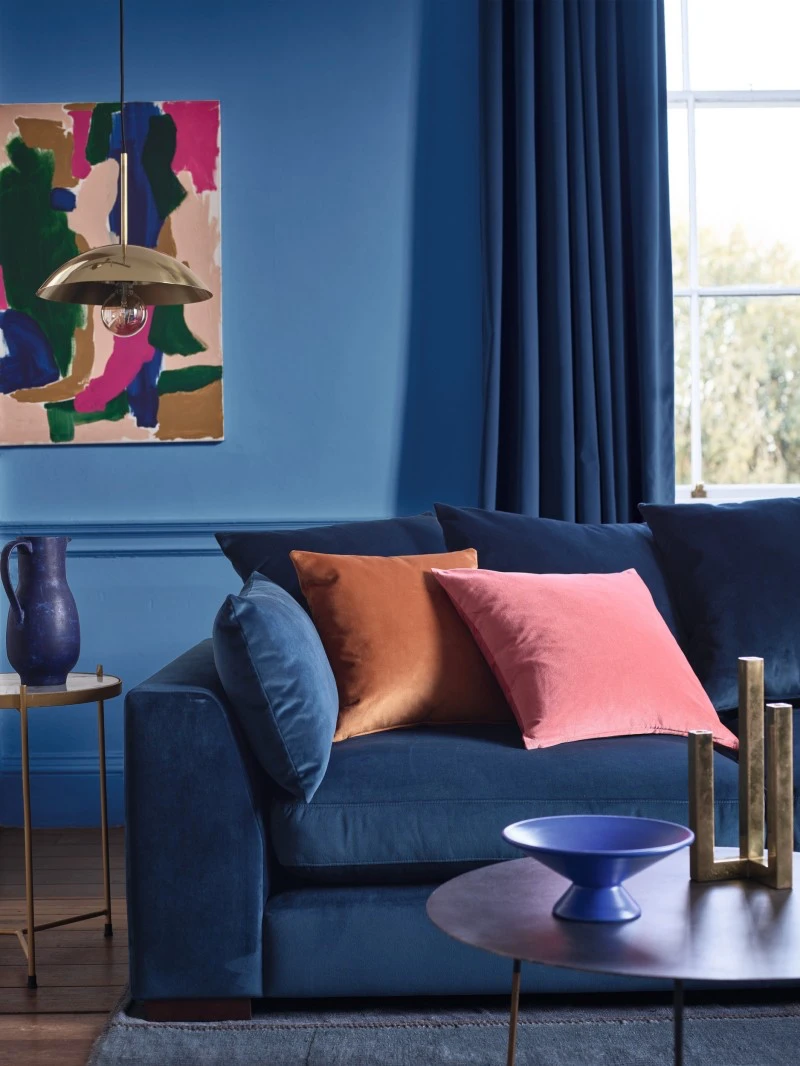
Your paint color is only as good as the primer underneath it.
Skipping primer, especially when making a drastic color change (like painting over that old red accent wall), is a false economy. A quality tinted primer, like Kilz 2 All-Purpose, will seal the old color, prevent it from bleeding through, and ensure your new, expensive paint color looks true to the chip. You’ll end up using fewer coats of your topcoat, saving you time and money.
Pay attention to your fixed elements—the things you can’t easily change. This includes flooring, stone or brick fireplaces, and kitchen countertops in an open-plan layout. Hold your paint chips directly against these surfaces. A beige that looks perfect on its own might suddenly look sickly yellow next to a cool gray stone fireplace. The undertones must be compatible for a truly seamless design.










